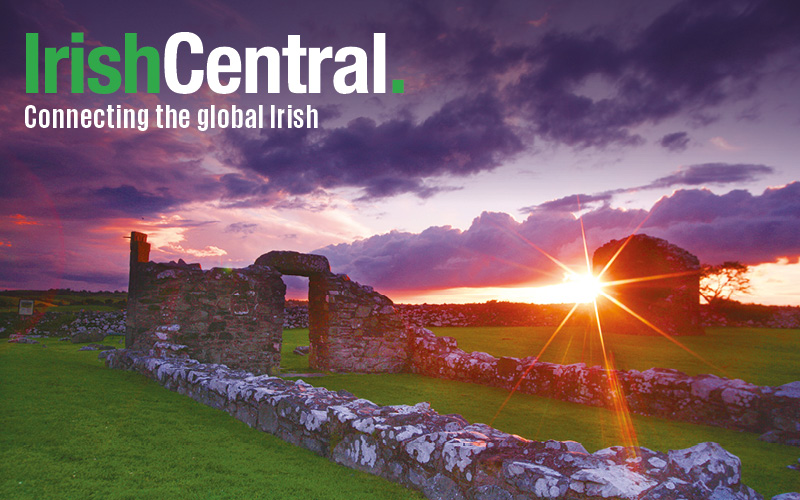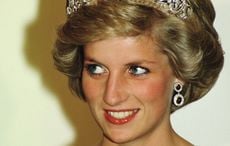An extract from “Irish Questions and Jewish Questions” a study of the Jews of Ireland and of their social history in Ireland.
Editor's note: May marks the Jewish American Heritage Month in the United States. Its aim is to pay tribute to the generations of Jewish Americans who have helped form the fabric of American history, culture, and society. To echo these sentiments IrishCentral take a look at Ireland's Jewish community and how they fit into Irish history.
The first mention of Jews in Ireland dates from the Annals of Innisfallen in 1079; according to an entry for that year [but probably written down decades or centuries later].
“Coicer Iudaide do thichtain dar muir agus aisceda leo do Thairdelbach, & a n-díchor doridisi dar muir”.
“Five Jews came from overseas with gifts for Tairdelbach”, a medieval King, “and they were sent back again over sea”.
There was a clear animosity on display in this one short sentence, setting a sour note for the start of the Jewish experience in Ireland. Jews would continue to reside in Ireland throughout the high medieval period, though the ban on Jews in England in 1290 extended to Ireland also. Though, there are some sporadic and elusive mentions of Jews living in Ireland in later centuries.
Legal and formal Jewish residence in Ireland returned in the Cromwellian period; Oliver Cromwell’s invitation for Jews to live in England in 1655 extended also to Ireland. Nonetheless, the Jewish community in Ireland in the 17th and 18th centuries remained small and little more than an adjunct of the British Jewish community. The Irish Jewish community at this time, reflecting broader patterns in Britain, were also almost exclusively Sephardim, Jews who could trace their heritage back to the expulsions from Spain that began in 1492. This changed in the 19th century when relatively large numbers of Lithuanian Jews arrived as immigrants in Ireland.
Read more: Vanishing tribe - Ireland's Jewish community fades further each year
The motivation for this migration has not always been clear. A certain folktale-style story that has often circulated within the Irish Jewish community, recounts how a Lithuanian Jewish man was emigrating to the US but when his ship docked in Cork he got off, convinced he had already reached the New World. The story is rarely anchored in a particular time and the name of the happy-go-lucky migrant is usually left unstated. Moreover, it is remarkably similar to origin stories told about Jewish communities in the north of England. Whatever the truth of why Lithuanian Jews moved in significant numbers to Ireland, it is undeniable that they soon had to negotiate a complicated set of ingrained ideas about Jews.
While the Annals of Innisfallen were unconcealed in their anti-Jewish animus, other medieval texts struck a different note. Claims that the Irish had a Biblical pedigree or that Irish was the language spoken before the destruction of Babel, abound in medieval genealogies and histories. This resonated into the 19th century, with the Irish regularly pitched as latter-day Hebrews – in exile from their land, denied political sovereignty, but clinging to their religion and ancient traditions. Parnell was often depicted as a Moses-like leader, bringing his people to the promised land of national freedom even as that people grumbled about the costs of freedom. Augusta Gregory’s 1911 play, The Deliverer, mournfully recounted how a nation not yet ready for freedom turned on Parnell/Moses, killing their true leader in an act of cowardice.
These free-playing associations of the Irish with the Jews became exponentially more complicated once actual Jews were residing in large numbers in Ireland; the largest majority of the Jewish community in early 20th century Ireland were concentrated along Portobello Road and Clanbrassil Street in Dublin, adding to their visibility. Hostility towards this immigrant population – at the time the only sector of the populace whose origins lay outside of the British Isles – was soon apparent. Indeed, some of the most central figures of 20th-century Irish life have been overt anti-Semites; D.P. Moran, John Charles McQuaid, Arthur Griffith, Oliver St. John Gogarty, Oliver Flanagan, the prominent Jesuit priest Richard Devane, his clerical colleague Denis Fahey of the Holy Ghost Fathers.
Antisemitic rhetoric and imagery regularly surfaced in the nationalist press before and after 1922. The IRA-backed campaign against usury in the late 1920s targeted Jewish moneylenders far more than their gentile counterparts. Jewish industrialists who fled the Nazis and established factories in the west of Ireland in the 1930s and '40s often had to negotiate a matrix of stereotypes and negative perceptions. The sizeable numbers of Irish men who served in the Palestine Police in the same period regularly interpreted what they saw in Jaffa, Jerusalem or Bethlehem in terms of the anti-Jewish animosities traditional to Catholicism.
Read more: Irish America’s tumultuous history and today’s heart-wrenching immigrant crisis
“Irish-Jewish History” is the history of the actual social lives of actual flesh-and-blood Jews in Ireland. But it also names another history: ideas of Jewishness in Ireland. This is partly a history of this kind of antisemitism, but something else also; the history of the idea that the Jews and the Irish share something in common. Some of the weirder race-obsessed fringes of Victorian and Edwardian Britain, for instance, took the long-standing Irish-as-Hebrews analogy and convinced themselves that the Irish were indeed a lost tribe of Israel. The attempt to excavate at Royal Tara in 1902, with hopes of finding the Ark of the Covenant there, caused well-publicized and well-attended protests; W. B. Yeats, Douglas Hyde, George Moore, and Arthur Griffith were all present. They were all aghast at this attempted desecration of a site of nationalist memory. Griffith was probably also aghast at the suggested comparison.
Around the same time as this insensitive archaeological dig, George Bernard Shaw threw himself into the published works of Max Nordau, a Zionist ideologue and best-selling (if highly pessimistic) writer of popular philosophy. Bernard Shaw used his reading of Nordau to imagine strong parallels between the Irish and Jewish experiences. And in more maudlin terms, Francis Sheehy Skeffington, describing the 1906 funeral of Michael Davitt, noticed the Jewish attendees - they were grateful for Davitt’s several interventions into Jewish causes and were, apparently, “the one race which has suffered more than the Irish.” The comparable patterns of Irish and Jewish assimilation in America and the similar motivations behind the revivals of Hebrew and Irish suggest that – his mawkish language aside - Sheehy Skeffington was right to identify such parallels.

The full cover of "Irish Questions and Jewish Questions".
“Irish Questions and Jewish Questions” is a study of the Jews of Ireland, of their social history in Ireland. The book also unpacks the idea of an Irish-Jewish parallel and the motivations of those who wanted to collapse together Irish identity and Jewish identity, as well as those other people who recoiled in horror from any suggestion that the Jews and the Irish might share anything in common.
Read more: My family's Holocaust story recalled for the Irish at Limerick remembrance event
* Aidan Beatty works at the Honors College of the University of Pittsburgh.
Dan O’Brien is an Irish Research Council Postdoctoral Fellow at University College Dublin.
“Irish Questions and Jewish Questions: Crossovers in Culture” is out now with Syracuse University Press. It will be formally launched by Prof. Mary McAuliffe at the Irish Jewish Museum, Portobello, Dublin, 7pm, Thursday, 25th October.




Comments